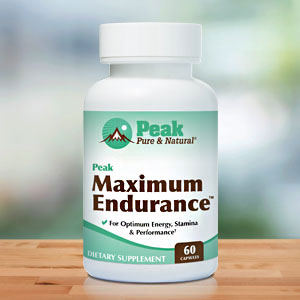Get Easy Health Digest™ in your inbox and don’t miss a thing when you subscribe today. Plus, get the free bonus report, Mother Nature’s Tips, Tricks and Remedies for Cholesterol, Blood Pressure & Blood Sugar as my way of saying welcome to the community!
Exercise or die? What if you’ve already had a heart attack

No one likes to exercise.
Well, some people do. But the majority of us have to be convinced by sobering statistics, like this one: Every day about 2,200 Americans die from a heart attack.
And we know exercise is just one of several healthy habits that can lower that risk… yada, yada, yada.
But you know what? According to the American Heart Association, there are about 335,000 recurrent heart attacks in the United States each year.
That means a lot of people survive that first heart attack.
But if you do, it’s certainly a bummer to think that it may be a struggle to survive the first year, and, statistically speaking, “the big one” may be waiting for you five years down the road.
All this begs the question: If exercise promotes heart health, if yours is already in bad shape — is exercise a good idea after the fact, can it really help and what kind’s best?
In it for the long haul
The answer is yes and yes.
After a person has a major cardiovascular event — like a heart attack — being placed in a rehabilitation and exercise training program can result in considerable improvements in cardiorespiratory fitness and the ability to carry out daily activities (referred to as functional capacity). It’s also good for a survivor’s mental health.
But here’s the thing… if you didn’t like exercise before, can you commit enough to significantly improve your health?
Most people don’t and they stop exercising once their stint in cardiovascular rehab is complete.
Well, a group of Canadian researchers thought exercise after heart attack was important and beneficial enough that they decided to explore a range of exercise options to see which may have the most appeal — in hopes, of course, that more survivor’s would stick to it and live a better longer life.
So, they randomized 130 patients with coronary artery disease (CAD) to a 12-week rehabilitation program in one of three types of exercise programs: High-intensity interval training (HIIT), moderate-to-vigorous intensity continuous training (MICT) and Nordic walking. When the program ended, the participants were followed for 14 weeks to observe their fitness habits.
Nordic walking is a form of outdoor walking that incorporates specially designed poles you work in opposition to your legs, the way you would if you were cross-country skiing. In fact, it’s a workout many cross-country skiers use to stay in shape during the off-season. It provides a low-impact, whole-body workout that exercises 80 percent of your upper and lower-body muscles.
Originating in Finland, Nordic walking has long been popular throughout Scandinavia and the U.K. However, it is still catching on in North America.
In the Canadian study, all three exercise programs improved depression symptoms and quality of life. But when it came to improvement in functional capacity, there was a clear winner out of the three exercise modalities. Individuals who engaged in Nordic walking saw a 19 percent improvement in functional capacity, compared to 13 percent for HIIT and 12 percent for MICT.
“This is a key finding because lower functional capacity predicts higher risk of future cardiovascular events in people with coronary artery disease,” says Dr. Jennifer Reed of the University of Ottawa. “Nordic walking engages core, upper and lower body muscles while reducing loading stress at the knee, which may have resulted in greater improvements in functional capacity.”
There is growing evidence suggesting that these sorts of non-conventional exercise interventions are more effective than traditional exercise approaches when it comes to improving functional capacity as measured by a six-minute walk test. This is an important predictor of cardiovascular events in patients with CAD.
“Patients with coronary artery disease frequently demonstrate diminished functional capacity, low quality of life and increased risk of subsequent cardiovascular events and mortality,” Reed says.
Choice is key to proper cardio rehab
The Canadian study is the first to directly compare the long-term effects of HIIT, MICT and Nordic walking.
The researchers noted that the addition of Nordic walking to a cardiovascular rehab program could be an ideal progression from standard MICT or traditional walking. This is especially true for deconditioned patients whose weakened state may not tolerate HIIT, or for those who can’t do HIIT because their health doesn’t allow it.
“The addition of Nordic poles to moderate to vigorous intensity walking is a simple, accessible option to enhance improvements in walking capacity, increase energy expenditure, engage upper body musculature and improve other functional parameters such as posture, gait and balance,” says Dr. Carl Lavie of the University of Queensland School of Medicine in New Orleans, Louisiana.
So if you have heart issues or are at high risk of cardiovascular disease, and you tend to get bored with the same old exercise routines, Nordic walking may be the ticket for you.
To begin, you’ll need the right equipment. The American Nordic Walking Association website has a shop with packages that have everything a beginner needs to get started, including poles and an instructional DVD. Or, if you want a wider selection, check out this post on the best Nordic walking poles available on the market today.
Once you have the poles, you’ll probably want some guidance as to how to use them properly. This three-minute video demonstrates the basic Nordic walking technique clearly and concisely, and this one shows you what mistakes to avoid so you can perfect your technique.
Editor’s note: There are perfectly safe and natural ways to decrease your risk of blood clots including the 25-cent vitamin, the nutrient that acts as a natural blood thinner and the powerful herb that helps clear plaque. To discover these and other secrets of long-lived hearts, click here for Hushed Up Natural Heart Cures and Common Misconceptions of Popular Heart Treatments!
Sources:
Nordic walking improves functional capacity in people with heart disease — Elsevier
Sustained Effects of Different Exercise Modalities on Physical and Mental Health in Patients With Coronary Artery Disease: A Randomized Clinical Trial — Canadian Journal of Cardiology
Beginner’s Guide to Nordic Pole Walking — American Nordic Walking Association














